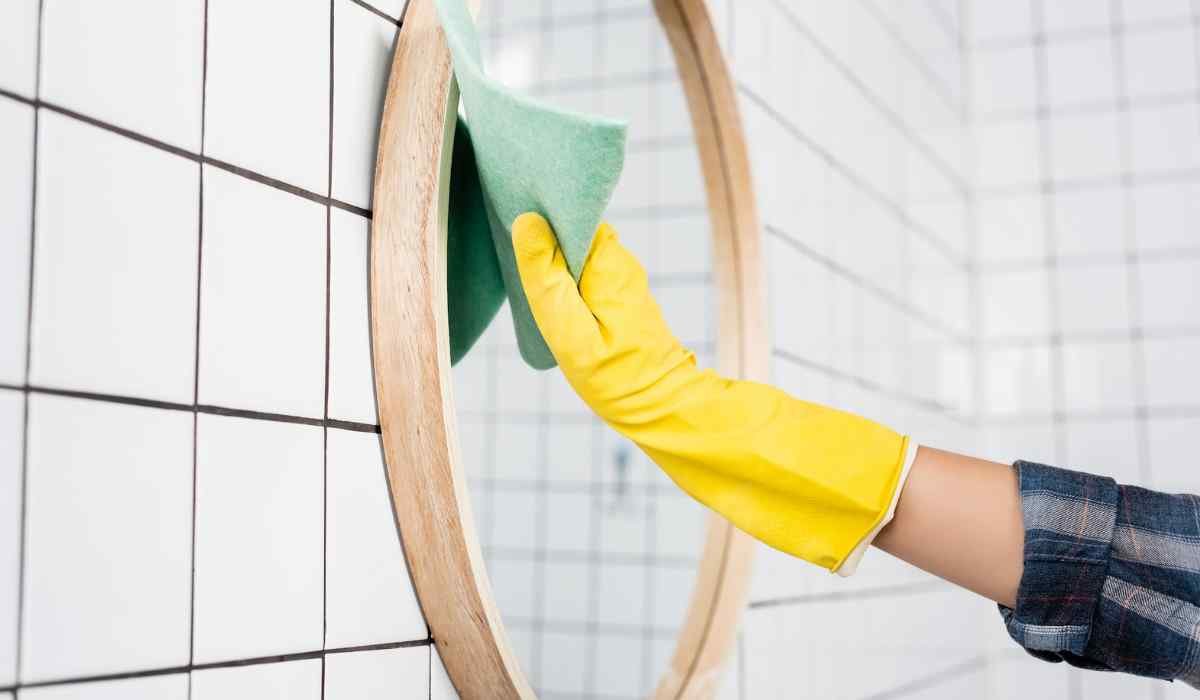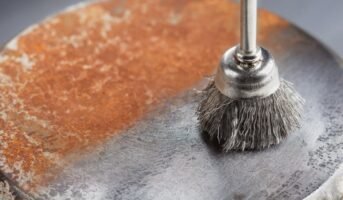Sticky and dirty mirrors are liked by none. They not only dull down the look of a space but also give an annoyingly hazy reflection. However most forget that with the right techniques and a little know-how, you can achieve a flawless, streak-free mirror that sparkles like new. This article gives you 5 powerful tips to remove those pesky streaks and leave your mirrors clean as new.
See also: Mirror Vastu: Tips for placing mirrors at home and office
Embrace the power of microfibre
The secret weapon in your streak-fighting arsenal? A microfibre cloth. Unlike traditional paper towels or cotton rags, microfibre boasts a tightly woven, lint-free construction. This magic fabric traps dust and grime within its fibres, preventing them from smearing across the mirror’s surface and leaving streaks.
For best results, invest in a high-quality microfibre cloth specifically designed for cleaning glass. Wash your microfibre cloths regularly, following the manufacturer’s instructions, to maintain their effectiveness. Avoid using fabric softeners, which can coat the fibres and reduce their cleaning power.
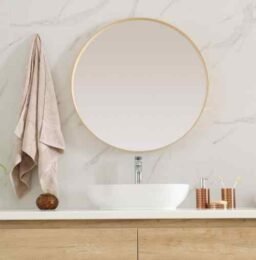
Use water – the simple solution
Believe it or not, for everyday cleaning, plain water can be surprisingly effective. For lightly soiled mirrors, simply dampen your microfibre cloth with clean water, wring it out thoroughly to remove excess moisture, and wipe the mirror in smooth, S-shaped strokes. Start at the top and work your way down, ensuring you cover the entire surface area with a single, even pass. This technique minimises the risk of leaving streaks behind.
The vinegar methods
For mirrors exhibiting stubborn grime, fingerprints, or hard water stains, a vinegar solution offers a natural and effective cleaning approach. The mild acidity of vinegar helps cut through dirt and grime without leaving behind harsh chemical residues.
Here’s how to create your own vinegar cleaning solution:
- Mix equal parts white vinegar and distilled water in a spray bottle.
- Distilled water prevents mineral deposits from the tap water from forming on your mirror.
- Spray the solution directly onto the mirror, avoiding oversaturation. A light misting is sufficient.
Important note: Always test your cleaning solution on an inconspicuous area of the mirror frame first to ensure it doesn’t cause any discoloration.
Once you’ve misted the mirror, use your trusty microfibre cloth to wipe the surface clean. Employ the same S-shaped strokes for optimal streak-free results.
Use newspaper
For those who prefer a more traditional approach, newspapers can be a surprisingly effective tool for cleaning mirrors. However, there’s a caveat: only use black and white, non-glossy sections of the newspaper. The coloured inks in glossy sections can bleed onto the mirror, leaving unwanted marks.
Here’s how to use newspaper for streak-free cleaning:
- Crumple a clean section of black and white newspaper into a loose ball.
- Buff the mirror in a circular motion, applying gentle pressure. The newspaper absorbs dirt and grime, leaving the mirror sparkling clean.
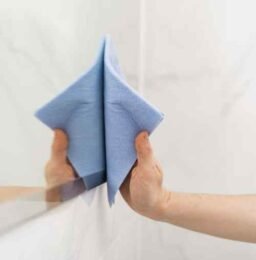
Coffee filters – a secret weapon
Coffee filters, those unassuming companions to your morning cup of joe, can also be deployed in the fight against mirror streaks. Their soft, lint-free texture makes them ideal for polishing glass surfaces. Simply use them in the same way you would a microfibre cloth, following the same wiping techniques for a clear and streak-free finish.
Bonus tip: The art of wiping
Wiping technique plays a crucial role in achieving a streak-free finish. Here are some additional pointers:
- Avoid circular motions: Circular motions can redeposit dirt and grime back onto the mirror, causing streaks. Instead, use smooth, S-shaped strokes or work your way in straight lines from top to bottom.
- Don’t skimp on drying: After wiping the mirror clean, use a dry section of your microfibre cloth to buff the surface and remove any remaining moisture. This final step helps prevent water spots and ensures a perfectly polished finish.
- Clean the frame too: Don’t neglect the mirror’s frame! Use a damp cloth to wipe away dust and grime. For intricate details, consider using a cotton swab dipped in your cleaning solution.
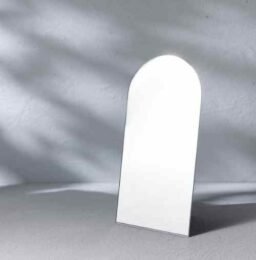
By following these tips and adopting the right techniques, you can transform your mirrors from streaky eyesores to dazzling reflections of a clean and well-maintained home. So grab your microfibre cloth, unleash the power of water or vinegar and embrace the satisfaction of a crystal-clear mirror.
FAQs
Is there anything I should avoid using on my mirror?
Absolutely. Avoid using paper towels, regular cloths, or abrasive cleaning sponges, as they can scratch the mirror's surface and leave behind lint. Additionally, skip harsh chemical cleaners, especially those containing ammonia, as they can damage the mirror's coating or leave streaks.
Can I use coloured microfiber cloth?
While coloured microfibre cloths can be effective, it's best to use white microfibre cloths specifically designed for cleaning glass. This minimises the risk of any dyes transferring to your mirror.
My tap water is very hard. Will it leave water spots?
Hard water can leave mineral deposits that show up as water spots after cleaning. To prevent this, use distilled water in your cleaning solution or give the final wipe-down with a dry microfibre cloth to buff away any remaining moisture.
The vinegar solution stings my eyes. Is there another option?
If the vinegar fumes irritate you, consider using a commercial glass cleaner formulated for streak-free results. Just be sure to choose a brand that doesn't leave behind residues.
How often should I clean my mirrors?
The cleaning frequency depends on how dusty or grimy your environment is. For everyday cleaning, a quick wipe with a damp microfibre cloth might suffice. For a deeper clean with vinegar or another solution, once a week or two is usually recommended.
What about cleaning large mirrors?
For larger mirrors, you might find it easier to use a spray bottle with your cleaning solution. Mist a small section at a time and wipe clean with your microfibre cloth using the S-shaped strokes for optimal results. Work your way down the mirror section by section.
Can I clean a mirror with a squeegee?
While squeegees can be effective on windows, they're generally not recommended for mirrors. The rubber blade can scratch the delicate mirror surface, and the squeegee method might leave behind streaks if not done perfectly. Stick to the trusty microfibre cloth for best results.
| Got any questions or point of view on our article? We would love to hear from you. Write to our Editor-in-Chief Jhumur Ghosh at [email protected] |
